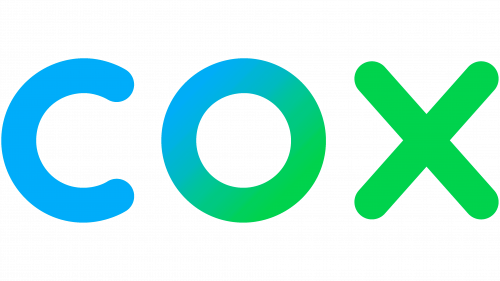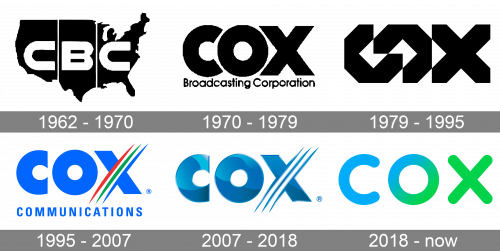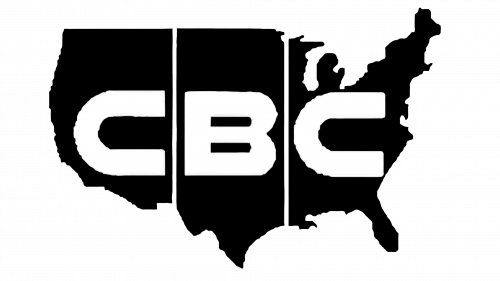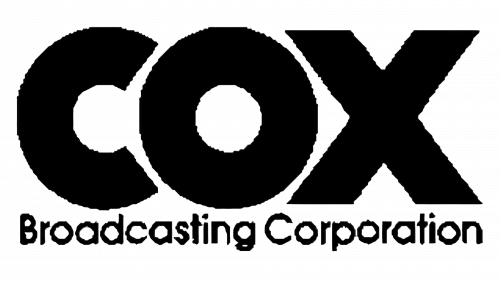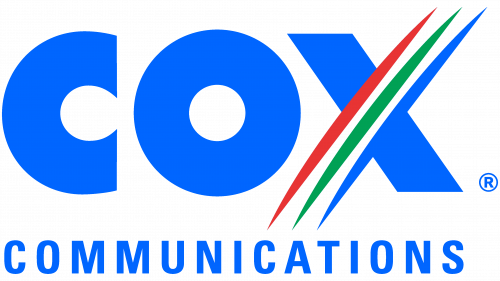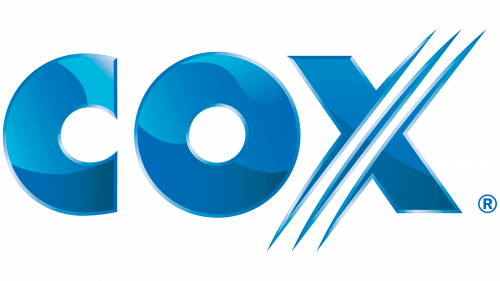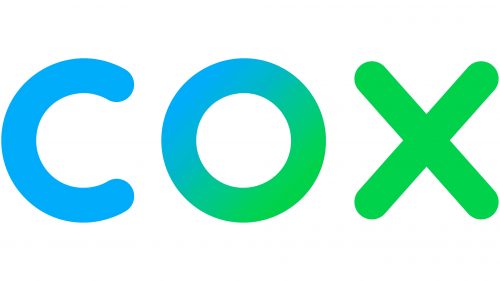Cox is the name of one of the most popular cable tv providers in the USA, which was established in 1962 by Cox Enterprises. Today the company provides not only cable television services but also wireless internet, home security, and even business consulting. The yearly revenue of Cox is more than 10 billion USD.
Meaning and history
The visual identity history of Cox can be divided into two periods — from 1962 to 1995 and from 1995 until now. The first period was black and white, and it traces back to the times when the name of the brand was Cox Broadcasting Corporation and Cox Cable (1979 — 1995). The second, colorful, era started in 1995, with the rename of the company to Cox Communications.
1962 – 1970
The original Cox logo, created in 1962, was executed in a monochrome color palette and featured the stylized map of the United States of America in solid black, divided by two thin white vertical lines into three segments. In each of the segments, there was one of the “CBC” (Cox Broadcasting Corporation) monogram letters in white placed. The abbreviation was executed in a flattened and extended ExtraBold sans-serif typeface.
1970 – 1979
The redesign of 1970 introduced a new concept of the badge in the old color palette. The massive solid black “COX” inscription in a custom sans-serif typeface was placed above the “Broadcasting Corporation” tagline written in a title case written f a slightly narrowed font with rounded contours and straight cuts of the letters, also in black. It was a simple yet powerful and memorable badge, which stayed with the company for almost nine years until its rebranding to Cox Cable.
1979 – 1995
With the new name, the new logo was introduced in 1979. The “COX” lettering was redrawn in a geometric stylized typeface with angular elements, and white flag-like elements in the negative spaces of “C” and “O”. As for the tagline, which was sometimes used on the primary version, it was executed in a smooth medium-weight rounded sans-serif typeface, which perfectly parlance’s the straight and sharp lines of the main logo part.
1995 – 2007
The company changed its name to Cox Communications in 1995, and this is when the new color palette was adopted for its logo. The bright blue ExtraBold “Cox” inscription with the stylized “X” was placed above the “Communications” in all capitals of a modern sans-serif typeface, in the same shade of blue. The “X” was the most eye-catching element of the badge and had one of its bars replaced by three smooth elongated lines in red green and blue, placed at a significant distance from each other.
2007 – 2018
The redesign of 2007 simplified the color palette of the Cox Communications visual identity to just blue, but it was now used in glossy gradients, for making the logotype three-dimensional and vivid. The contours of the inscription remained the same, just got emboldened and slightly shadowed in order to add volume and a sense of motion to the insignia. The logo was sometimes used with the additional tagline in the lowercase of a simple sans-serif typeface, with the lettering in thick or extra thin lines, in light gray color, which looked balancing and professional.
2018 – Today
In 2018 the Vox logo is being redesigned again and this time the concept was changed dramatically. Now it is a bold rounded sans-serif inscription, which is sometimes accompanied by a tagline in the title case. The lettering is executed in bright gradients from blue to green, looking delightful and fresh. As for the tagline, it can be seen whether in bright blue (most common), dark blue (for Cox Business), or purple (for Cox Media), and in two last cases the green gradients are being replaced by the gradients of the shades, used in the tagline.
Font and color
The main part of the Cox Communications visual identity, the uppercase “Cox” is executed in a simple yet bold rounded sans-serif typeface, which is quite close to such commercial fonts as Galey a rounded Black, Arista Pro Alternate Bold, and Frankfurter Std Medium.
The primary blue and green color palette of the logo looks refreshing and cool, evoking a sense of progress and movement, and at the same time point to the stability and reliability of the company, which main aim is to provide its users with the best services in telecommunications and cable to industries.


